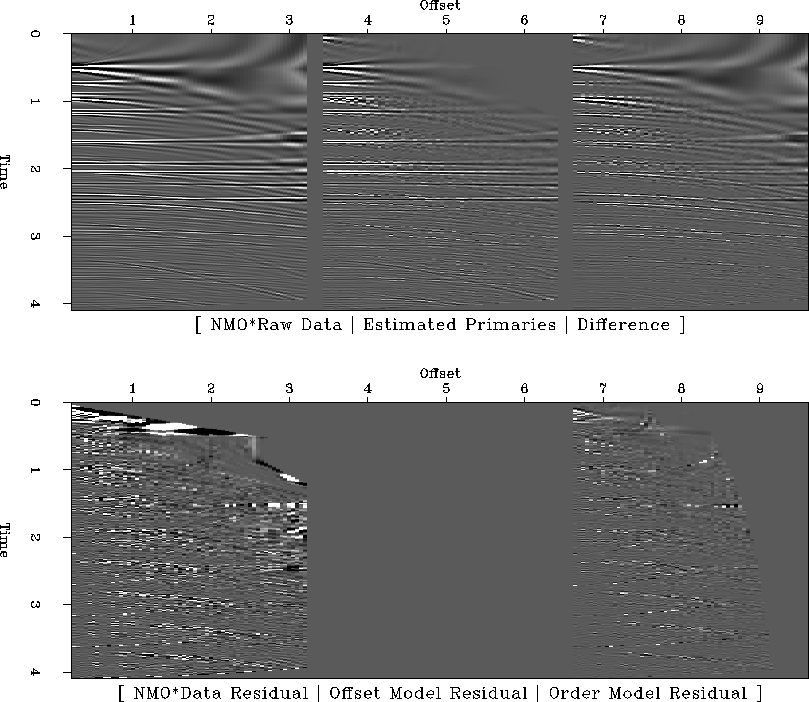




Next: Devil's Advocate: What do
Up: Results
Previous: Testing the Raw Algorithm
Figure 5 illustrates the effect of setting  in equation
(10), which removes the influence of the regularization term which roughens
the model across offset [equation (9)]. The results are intriguing. Most
noticeably, leftover multiple reflections in the ``Estimated Primaries'' panel appear to be
scrambled over offset, while primaries appear mostly intact. Signal-to-noise ratio has increased
considerably. The fact that the roughener across offset decorrelates the residual multiples should
be further exploited.
in equation
(10), which removes the influence of the regularization term which roughens
the model across offset [equation (9)]. The results are intriguing. Most
noticeably, leftover multiple reflections in the ``Estimated Primaries'' panel appear to be
scrambled over offset, while primaries appear mostly intact. Signal-to-noise ratio has increased
considerably. The fact that the roughener across offset decorrelates the residual multiples should
be further exploited.
Notice that the model residual is zero at long offsets and small times. This is due to the fact that
the difference is not taken across the same offsets, to account for the AVO multiples, according to
equation (4). When hp + hm > hmax, no difference is taken.
cmps.nograd.hask
Figure 5
Only the regularization which roughens across orders of pseudo-primary, equation (8),
is used in the inversion.
Top row, left to right: Raw Haskell data, NMO applied; Estimated primary panel; difference panel.
Bottom row, left to right: Data residual; first panel of model residuals, equations
(9) and (8), respectively.










Next: Devil's Advocate: What do
Up: Results
Previous: Testing the Raw Algorithm
Stanford Exploration Project
6/10/2002
